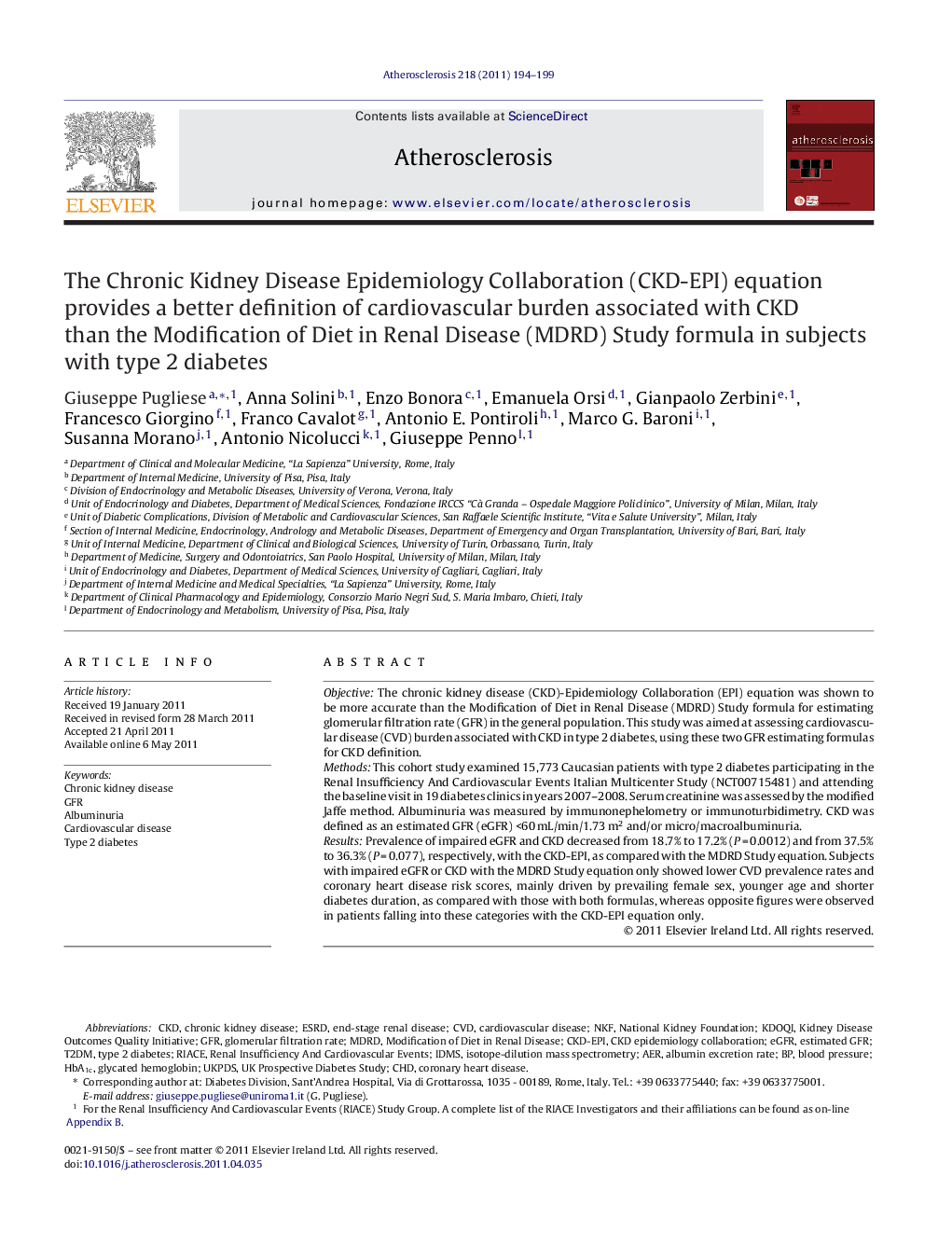| Article ID | Journal | Published Year | Pages | File Type |
|---|---|---|---|---|
| 5950571 | Atherosclerosis | 2011 | 6 Pages |
ObjectiveThe chronic kidney disease (CKD)-Epidemiology Collaboration (EPI) equation was shown to be more accurate than the Modification of Diet in Renal Disease (MDRD) Study formula for estimating glomerular filtration rate (GFR) in the general population. This study was aimed at assessing cardiovascular disease (CVD) burden associated with CKD in type 2 diabetes, using these two GFR estimating formulas for CKD definition.MethodsThis cohort study examined 15,773 Caucasian patients with type 2 diabetes participating in the Renal Insufficiency And Cardiovascular Events Italian Multicenter Study (NCT00715481) and attending the baseline visit in 19 diabetes clinics in years 2007-2008. Serum creatinine was assessed by the modified Jaffe method. Albuminuria was measured by immunonephelometry or immunoturbidimetry. CKD was defined as an estimated GFR (eGFR) <60Â mL/min/1.73Â m2 and/or micro/macroalbuminuria.ResultsPrevalence of impaired eGFR and CKD decreased from 18.7% to 17.2% (PÂ =Â 0.0012) and from 37.5% to 36.3% (PÂ =Â 0.077), respectively, with the CKD-EPI, as compared with the MDRD Study equation. Subjects with impaired eGFR or CKD with the MDRD Study equation only showed lower CVD prevalence rates and coronary heart disease risk scores, mainly driven by prevailing female sex, younger age and shorter diabetes duration, as compared with those with both formulas, whereas opposite figures were observed in patients falling into these categories with the CKD-EPI equation only.ConclusionsEstimating GFR in patients with type 2 diabetes using the CKD-EPI equation provides a better definition of CVD burden associated with CKD not only in individuals reclassified upward, but also in those reclassified downward.
